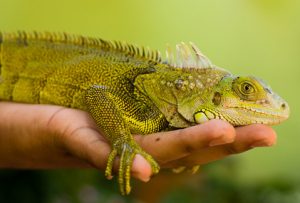*You will have access to the course for 12 months only. You can purchase course extensions.
Herpetology Diploma Level 3
The Herpetology course has been designed as an introductory course for those wanting to learn more about Reptiles and Amphibians.
Learn about Reptile and Amphibian origins, classification, anatomy and physiology. It also includes endangered species and threats to their survival.
The course units explore the diet & nutritional requirements, reproduction and general behaviour of frogs, toads, newts, salamanders, snakes, geckos, turtles, lizards, iguanas, tortoises, terrapins & crocodilia.
The course also explores the evidence of evolutionary development from the time when all life lived in the seas, to when animals moved onto the land.
Reptiles have been a part of animal life for hundreds of millions of years. Fossil remains suggest that reptiles were more diverse in the distant past but today, just four Orders of reptile remain. Certain modern reptiles such as the Crocodilia, can be traced to ancient forms whilst one Order, the Rhynchocephalia (Tuatara), is considered to resemble the earliest reptiles. Although animal life is found on every continent, the reptilia are found on six of the seven continents.
Unit 1
Reptile Origins & Introductory Biology
Unit 1 of the Herpetology course explores the classification of reptiles in the animal kingdom. It includes a general introduction to the body systems of the reptile and specific aspects of their physiology. Reptile biogeography is also a topic of this unit.
Unit 2
Amphibian Origins & Introductory Biology
The amphibia represent the oldest land-living vertebrates. Unit 2 covers their classification and an introduction to their anatomy and physiology. Although they can live on the land, their reliance on water for reproduction is discussed in this unit.
Unit 3
Reptiles - The Chelonia: Turtles, Tortoises & Terrapins
The Chelonia are reptiles with a protective shell that live in the water and on the land. This unit covers their diet and nutritional requirements, reproduction and general behaviour. Endangered species of the Chelonia are a topic in this unit.
Unit 4
Amphibia – Frogs, Toads, Newts & Salamanders
Unite 4 looks at the amphibia in more detail with specific topics that include their combination of two respiratory systems, their reproductive behaviour and diet. The amphibian ability to enter ‘stasis’ is discussed plus, threats to their survival.
Unit 5
Reptiles - Crocodilia & Squamata
The crocodilia include alligators, crocodiles and the gharial. The Squamata discussed in unit 5 include the lizards, iguanas, geckos and snakes. Topics include differences in anatomy between the crocodila and squamata, reproductive behaviour and diet and endangerment.
Unit 6
Evolutionary Herpetology
Unit 6 is all about unusual examples of animals in the reptile and amphibian classes. The examples demonstrate evidence of evolutionary development from the time when all life lived in the seas, to when animals moved onto the land.
We offer a selection of accredited and employer recognised courses specifically designed for careers working with animals.
If you have any questions about our courses, please contact us.
We’ve assisted many people to achieve their goal to work with animals. Read more about our 5-star reviews and student success stories.
Gain relevant training to achieve your goal to work with animals.


